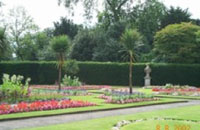Hounslow is an attractive place to live and work. With miles of river, canals, wildlife preserves and open spaces. The borough has some of the most beautiful parks and open spaces in London with no fewer than five historic houses and landscape gardens
Hounslow is currently twinned with the following communities:
Palestine
Leningradsky DiRamallahstrict, Russia
Lahore, Pakistan Issy-les-Moulineaux
About the Council
The Council’s vision for future local government in Hounslow is as a community leader, not simply a provider of services. We will continue to bring our residents closer to the local democratic process through our Area Committees and consultation, so we can understand their priorities and meet their diverse needs. We are committed to modernisation and enthusiastic to seize the challenges and opportunities it brings.
Hounslow was one of the first wave of local authorities to take up the challenge to modernise local government in early 1999. A pilot model – of leader and cabinet, scrutiny panels and local area committees – was developed in consultation with local people. We also led the way as the first Council to webcast live Council meetings in 2001.
Following the election in May 2006, Hounslow is under No Overall Control (NOC) with the Conservative Party and Isleworth Community Group having formed an alliance to run the Council. The Council has 20 wards with 60 elected members. Currently 24 are Labour, 23 Conservative, 3 Hounslow Independent Alliance, 4 Liberal Democrat, and 6 Isleworth Community Group.
Find out more information about the Council by
clicking here
Departmental Structure
The Council has 5 main departments/service areas:-
Chief Executive’s Directorate
Children’s Services and Lifelong Learning
Housing and Community Services
Street Management & Public Protection
Customer Services and Modernisation
In April 2002 the Council established ’Hounslow Homes’, an ’arms length management organisation’, to deliver housing management services. Statutory and strategic housing functions continue to be retained by the Council. Since May 1998, leisure services have been provided by Community Initiatives Partnerships Ltd (CIP), a charitable not-for-profit company, set up and mainly funded by the Council.
Find out about working for the council by clicking here
Teaching
Why not take a look at our specifically designed website to help you plan your next career move into one of our great schools?
Go the website by clicking here http://www.hounslow.gov.uk
You can also view our NQT primary pool http://www.teachinhounslow.org.uk/default.aspx?ContentCode=nqt
Information current vacancies about housing options
Employment Practices
The Council recognises that services need to be delivered by a workforce that reflects the diversity of the community and it is necessary therefore for these groups to be represented at all levels and within all types of work.
The Council actively promotes equal opportunity through the application of employment policies which ensure that individuals receive treatment which is fair, equitable and consistent with their relevant aptitudes, potential, skills and abilities.
The Council ensures that individuals are recruited, selected, appraised, promoted and treated on objective criteria, having regard to relevant experience, potential, skills and abilities. In particular, no applicant or employee will be placed at a disadvantage by requirements or conditions which are not necessary to the performance of the job, or which constitute indirect unfair discrimination.
![]()


